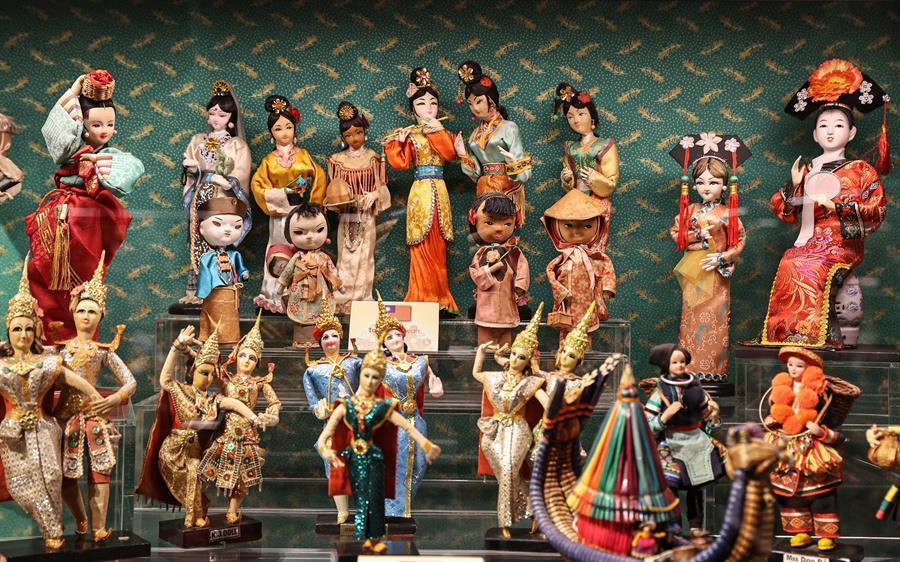Doll exhibition at Rahmi Koç Museum
ISTANBUL

Rahmi M. Koç Museum is hosting the “Dolls” exhibition, which sheds light on the journey of dolls, the most important milestones of the toy industry from the ancient ages to the present.
From the ancient times to the 21st century, dolls have been objects of belief and culture, as well as children’s toys. While there were wax dolls used for witchcraft in the Middle Ages in the West, wooden dolls in lace dresses appeared in the Renaissance era, made for noble women.
The dolls produced by locals of different geographies with traditional methods were replaced by the one that are mass produced using porcelain and plastic in large factories at lower costs with the industrial revolution.
Curated by Serra Kanyak, the exhibition presents a special selection of different types of dolls from the wooden dolls of the 18th century to rag dolls of Anatolia, from Asian and African faith dolls to fashion dolls, from horror dolls to traditional world dolls. It both explains the usage purposes of the doll concept since prehistoric times and shows the visitors the great transformation of the doll industry over the centuries.
The founder of the museum, Rahmi M. Koç, who pioneered the exhibition, included the dolls in his personal collection in the project for display. He also bought various dolls during his travels abroad.
At the opening ceremony of the exhibition on Sept. 28, Mine Sofuoğlu, general manager of Rahmi M. Koç Museum, said that the exhibition, which was realized after three years of efforts, means a lot to them.
Noting that museums gained different experiences during the COVID-19 pandemic, Sofuoğlu said, “With digitalization, museums have become much more attractive for young visitors. We have also gained a new audience. These days, as we gradually leave the pandemic behind us, we offer a different experience with the ‘Dolls’ exhibition. I hope it will be a magnificent exhibition that all visitors will enjoy.”
Stating that dolls are not only toys but also sociological elements and works of art, Sofuoğlu said that the exhibition, which consists of beautiful examples of the development of dolls from the past to the present, can be visited by people of every age.
Seven countries visited to complete collection
On the other hand, Kanyak shared information about the formation of the exhibition process spanning three years and the objects in the collection. She said, “When we decided to organize a doll exhibition, there were already various dolls in Koç’s personal collection and in the collections of the Istanbul and Ankara Rahmi Koç Museums. However, in order to create a world dolls exhibition, we needed to have a much larger collection. First of all, I researched the subject of ‘What is a doll?’ I identified the deficiencies to obtain different types of dolls in the world literature, and then, together with Rahmi Koç, we started to collect the missing ones in our collection.”
Stating that Koç bought many dolls from Sweden, France, England and America and she also traveled to Germany, Sweden, Switzerland and Russia to research and buy babies, Kanyak said she visited various museums, exhibitions, antique and vintage markets.
“The collection was enriched with the donations of our close museum friends. After three years, we got ready for the exhibition. We present a historical story in the exhibition chronologically,” she added.
The main sponsor of the exhibition, Zen Pırlanta Board Member Şükran Güzeliş, said that dolls, like jewelry, build a temporal bridge between the past and the future. She said that there are similarities between doll making and jewelry making.
The exhibition can be visited between 10 a.m. and 5:30 on weekdays except Mondays, and between 10.00-19.00 on weekends.
















